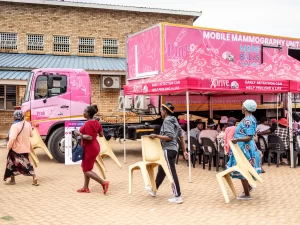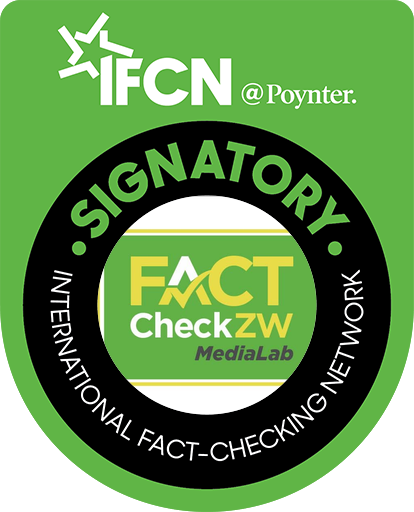CLAIM: ‘The country has tried five times in the past to renew a local currency…’
SOURCE: ZimLive
VERDICT: True
Zimbabwe’s financial history has been a rollercoaster, and the local currency, the Zimbabwean dollar, has been on a particularly wild ride. From the pre-dollarisation trillionaires to the recently introduced ZiG, it might get a little bit confusing. Especially on how many attempts have been made to make the local currency work again.
ZimLive, an online media house on April 15, 2024, in an article headlined: ‘Will Zimbabwe’s new ZiG currency be a hit or another failure?,’ claimed that before the recent introduction of the Zimbabwe Gold (ZiG) this month, the Southern African country had made five other attempts in the past to renew the local currency. In paragraph 17, the story reads in part: ‘The country has tried five times in the past to renew a local currency but has failed,’ while the lead also reads in part: ‘…Harare makes a sixth attempt at introducing a revamped unit.’
Through a Monetary Policy Statement (MPS), the Reserve Bank of Zimbabwe (RBZ) introduced the ZiG, a structured currency, on April 5, 2024, to replace the Zimbabwe Dollar, which had lost value.
In February 2009 Zimbabwe completely abandoned the use of its inflation-ravaged local currency – the Zimbabwe Dollar and adopted a basket of foreign currencies with the USD as the anchor currency of reference. To address the USD change challenges in Zimbabwe’s multicurrency regime, five years later the central bank introduced bond coins which began circulating on 18 December 2014.
The bond coins, whose circulation was limited to Zimbabwe initially came in the denominations of 1c, 5c, 10c, 25c, and 50c. Two years later in November 2016, the RBZ went on to introduce bond notes. ‘The bond notes will be released into the market through normal banking channels in small denominations of $2 and $5 to fund export incentives of up to 5% which will be paid to exporters of goods and services and diaspora remittances,’ reads the RBZ statement published at the time.
Three years later, in 2019 following the RBZ’s separation of Foreign Currency Accounts from local currency, the country renamed the latter, which constituted bond coins and notes as well as electronic bank balances, Real Time Gross Settlement Electronic Dollars (RTGS Dollars) through Statutory Instrument (SI) 33 of 2019. In mid-2020, Zimbabwe introduced new ZW$10 and ZW$20 notes into the market.
The new notes were announced by Finance Minister, Mthuli Ncube through Statutory Instrument (SI) 103A of 2020. A ZW$50 note was then introduced the following year (July 2021), and later followed by a ZW$100 note in April 2022.
In summary, Zimbabwe in February 2009 completely abandoned the use of its local currency – the Zimbabwe Dollar – which had lost value to inflation, and adopted a basket of foreign currencies including the USD, the South African Rand, Botswana Pula and others. It was only in 2014 that the RBZ introduced bond coins presumably to solve the change challenges. Bond coins were later followed by bond notes and the two were interpreted as attempts to bring back the demonetized Zimbabwe Dollar in a multicurrency regime. In 2019 the RBZ then formalised bond notes and coins and all electronic balances as the official local currency of the country and named it RTGS Dollars. Between 2020 and 2022 the country introduced banknotes in the denomination of ZWL$10, ZWL$20, ZWL$50, and ZWL$100, which translated into the renaming of the country’s currency from RTGS Dollar to the ZWL In April 2024, following the further depreciation of the Zimbabwe currency, the country then introduced the Zimbabwe Gold (ZiG).
What you might need to know about the new currency
What is ZiG currency?
It is the Zimbabwean Gold Backed currency of notes and coins issued by RBZ under the SI 60/2024 Presidential Powers (Temporary)Measures regulations to replace the ZWL currency.
Does the currency change affect USD accounts and balances?
USD balances remain unchanged, and the operational modalities of the USD and all other foreign currency accounts remains the same.
What was the conversion rate for ZWL Balances?
Your ZWL balance was converted to the ZiG currency balance by applying an exchange rate of ZiG 1: ZW$ 2 498.7242.
Are POS machines now accepting ZiG?
Yes, though the currency symbol may still reflect ZWL on some of the POS terminals, all local currency transactions will be processed as ZiG.
I still have some ZWL notes, can I still deposit them?
Yes you can still deposit ZWL cash at your nearest bank by the 26th of April, 2024.
Can I use my ZiG to pay for all services and goods?
No. Some selected services such as fuel and passports are still transacted in USD.
Conclusion
The following are the measures that have been taken by Zimbabwe to resuscitate the Zimbabwe dollar which was abandoned in 2009:
- Introduction of bond coins in 2014
- Introduction of bond notes in 2016
- Introduction of the RTGS Dollars in 2019
- Introduction of ZWL$10 and ZWL$20 notes in 2020
- Introduction of ZWL$50 and ZWL$100 in 2021 and 2022 respectively
- Introduction of ZiG in 2024.
The claim: ‘The country has tried five times in the past to renew a local currency…’ has been rated as true as shown in the evidence above. Zimbabwe has in this period introduced the bonds, RTGS, ZWL and now, the ZiG.








